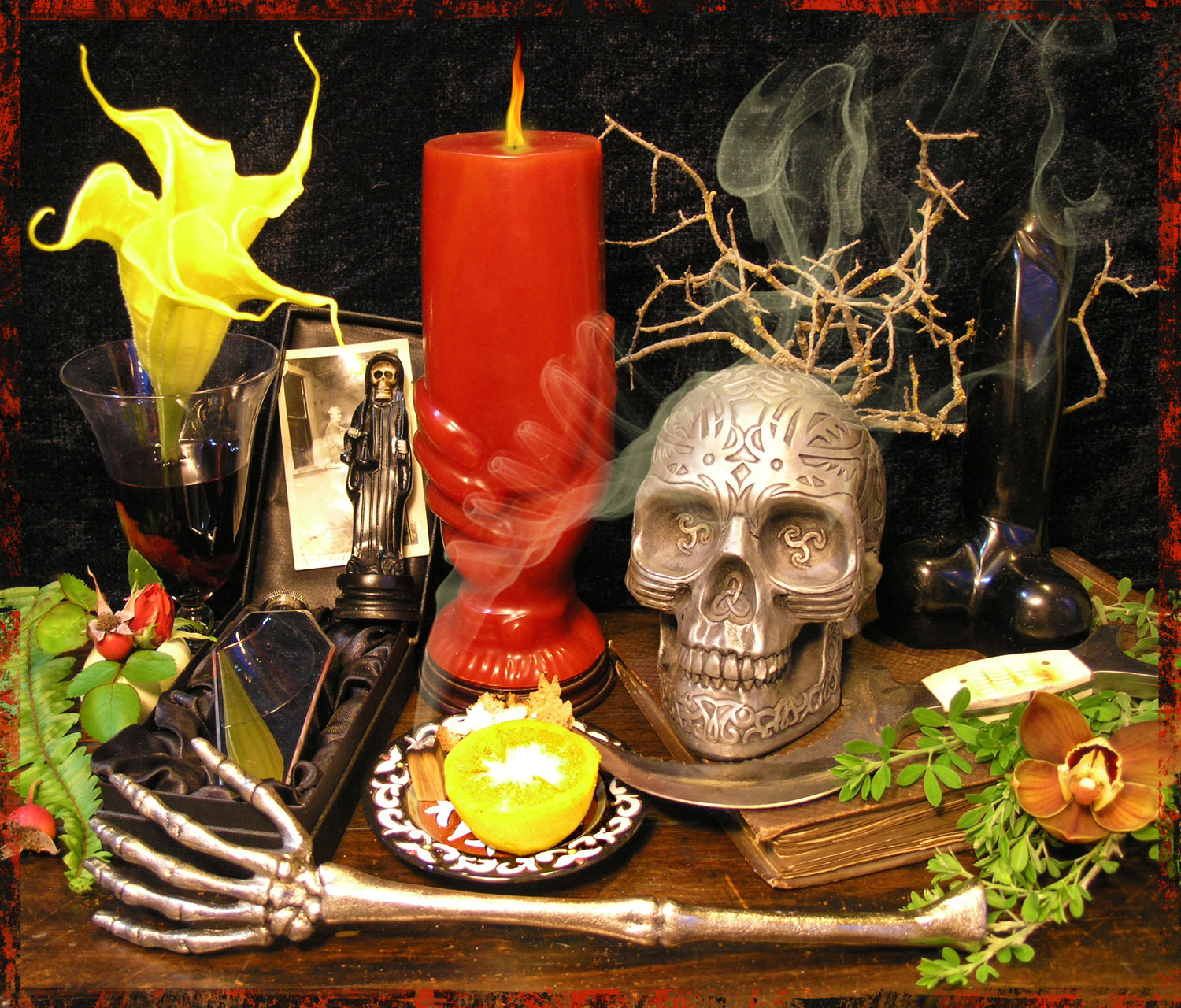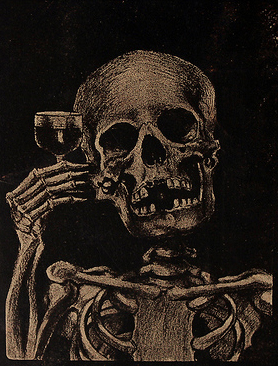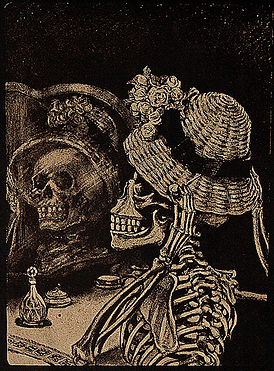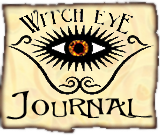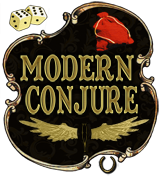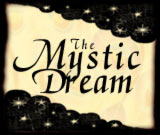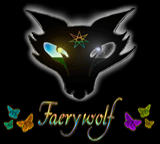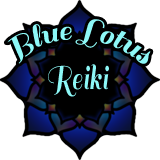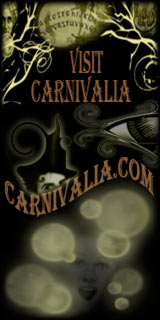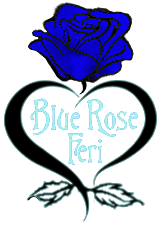 |
|||
The practice of Witchcraft is varied. While particular traditions have formed over the years each offering their own style of working, underneath all of the religious trappings exists a common thread that can be viewed outside the context of the specific attitudes, eras, and even cultures of those traditions. In my many years of studying, practicing, and teaching the Craft I have come to identify one common element that all forms of witchcraft share regardless of their cultural origins: working with spirits.
While these different traditions might have radically different views on how to work with spirits, or even what they precisely are, we can observe this one element in each and every form of witchcraft that has graced this planet, both ancient and modern. Consider the witches of ancient Greece who met at a crossroads in the name of Hecate to commune with spirits who would grant favors or blight enemies… or those witches in the modern Reclaiming tradition who may just as easily (though not necessarily) approach the spirits and gods as psychological aspects of the human psyche. This article will not attempt to define these beings, but instead provide a practical way of working with them.
Faery tradition, being an American grown form of the Craft, embraces cultural ideas from a wide variety of sources. While some cultures fear the dead and impose taboos and restrictions on how to deal with them, other cultures revere the dead giving rise to traditions that offer practices on forging and maintaining relationships with the ancestors so that they continue to be an integral part of one’s daily life. American culture tends to put forward a rather schizophrenic version that incorporates both fear and reverence. Faery tradition addresses this and provides a means to effectively synthesize the two into one; by having us face our fear and then move through it into ecstatic union with the divine. This can be seen in the symbol of the Black Heart of Innocence, burning with the Blue Fire of creation where we are stripped bare of anything but our own divinity.
This is presented to us in the rite of Samhain when we open the Western Gate to the Land of the Dead; when we call to Ana and the Arddu, who teach us how to let our fears wash over and through us, to wash us clean, and prepare us for our own encounter with Death. We commune with the spirits of our own dead, opening our hearts to their wisdom. Through these practices we learn how to make death an ally; how to draw strength from the reality of our own eventual demise.
Since much of Faery practice relies on cultural precedent as well as individual experimentation, we can look to those systems of magic and spirituality that pre-dated our tradition’s contemporary form to catch a glimpse of those elements of working with the dead that inform our current practice. Of particular interest to us here are the ancestral practices of African and European (and specifically Celtic) cultures and their merging with Native American ideas to become the driving force behind Conjure or “hoodoo”.
This homegrown American form of folk-magic draws from many cultural sources to achieve its ends. It is not uncommon to see a conjure worker utilizing objects and other materials from a diverse array of religions and cultures, all while tying it all together within the particular style recognizable as ‘conjure magic’. Candles dedicated to Catholic saints will burn alongside red flannel bags containing Solomonic seals, stuffed with native herbs and roots, prayed over with the Psalms, while standing at a crossroads. Many magical cultures have woven their threads throughout the tapestry that is conjure, and it is the tradition of conjure that forms a foundational basis for our own tradition of Faery.
With this in mind, we should be looking at those elements of pre-Faery practice that deal with the dead, and observe them from within the framework of our own practices. Immediately we can see how elements of Conjure that deal with the dead can help us in the formation of our own workings with the ancestors. Consider the time-honored practice of building and maintaining an ancestral altar.
The ancestral altar is where you will be praying and making offerings to your Beloved Dead and also to the Mighty Dead, two terms in traditional witchcraft that denote our personal and our spiritual ancestors, respectively. There are no rules, only guidelines when creating an ancestral altar. What guidelines I provide are based in the Faery tradition and what my Faery practice has revealed to me personally over the years of my work. Take from it what you will.
BUILDING THE ALTAR
The ancestral altar is traditionally placed in the west, the direction associated with the land of the dead in Celtic mythology. This is also the direction for the element of Water, and the image of the sea is a potent visual key that grants access to the Underworld, the realm of spirits, the Fae, and the dead. By placing the altar here we are drawing together threads of mythic power and weaving them into a potent magical trigger that will deepen our work as it progresses.
The altar itself may be of any material. Cases have been made for and against nearly every conceivable material and so it is probably best to go with what your own preference and abilities will afford you. When you have chosen the furniture or area that is to become your ancestral altar, and using whatever methods you feel empowered to use, you may wish to call upon the assistance of Ana and the Arddu to bless and charge it with their presence. If you do not have a preferred method you may use the following invocations:
Invocation of the Arddu Primal Lord of Darkened land,
Invocation of Ana Ancient Queen of Death’s repose
Once you have decided on a dedicated space for your altar, it should be adorned with objects and symbols that represent the dead to you. In general terms this might become images of skulls, bones, and other things associated with death. For specific ancestors this will likely be photographs, drawings, or other representations of them.
Generally candles are also placed upon the altar and are lit as part of ones devotional rites. I also tend to place a mirror here, especially that of a curved, black scrying mirror. Regardless of how our altars are decorated, the important part of this work is the work itself. Here we may find simple instruction in the tales often told in Irish and Welsh mythology where we find the practice of honoring the ancestors similar to the practice of honoring and befriending the Fae; that is to say the practice of making offerings.
MAKING AN OFFERING
Traditional offerings to the Fae often consisted of milk and honey. While we can certainly use this as a basis for our own devotional offerings, we can also draw from the personal experiences of those particular ancestral spirits with whom we wish to relate. Favorite foods and beverages are often given in this capacity, though incense, candles, stones, shells, and other items are also offered in this way. If grandma was collector of stamps who was known to have loved a shot of whiskey in her coffee, then we need look no further for what might be appropriate offerings for her.
Specific foods, beverages, and other items might also be associated with more specific types of workings as well. If we wanted grandma’s help for a love spell, for example, we might want to offer her some of her favorite flowers and perhaps some candies or dessert; something sweet to “sweeten up” our prospective love interest. Likewise, were I to request her assistance in healing work I might concoct a mixture of hot tea, lemon, honey, and whiskey that she used to make as a tonic for colds and flu.
In the case of working with the Mighty Dead we might not have first hand accounts of what an appropriate offering might be and so we have to rely on stories and tradition. In the case of the late Faery Grandmaster Victor Anderson we can rest in the knowledge that a favorite of his beverages was a cup of hot buttered tea, bringing us to the point that it is unnecessary for us to indulge in the offering ourselves lest we needlessly clog our (still very living) arteries! His wife, the late Faery Grandmaster Cora Anderson was well known to have loved pie and so these two items are quite appropriate as offerings to our own Mighty Dead.
Often people will say something as they place the offerings upon the altar, or at least address the particular ancestor in some fashion. The most important part of all of this is the feeling of being connected to her through the act of making the offering.
The offerings themselves are not eaten, but instead left so that the spirits can draw forth the vital force from the food as their nourishment. I generally recommend leaving offerings for no more than 24-48 hours, as the food will generally spoil making for a pretty nasty offering! I often bury the remnants of offerings but feel free to follow your own direction.
Whether we are honoring the Beloved Dead, the Mighty Dead, or both, the purpose and the practice are basically the same. We make offerings to them… we speak their names and tell their stories. We share their wisdom. We ask for their help. We form a personal relationship to them and maintain that relationship through repetition of ceremony, through practice, though attention, and love. We devote part of our practice to honoring their memories and keeping their spirits alive through our own works, because as the saying goes, “What is remembered lives!”
©2005 Storm Faerywolf
|
|||
|
|||

